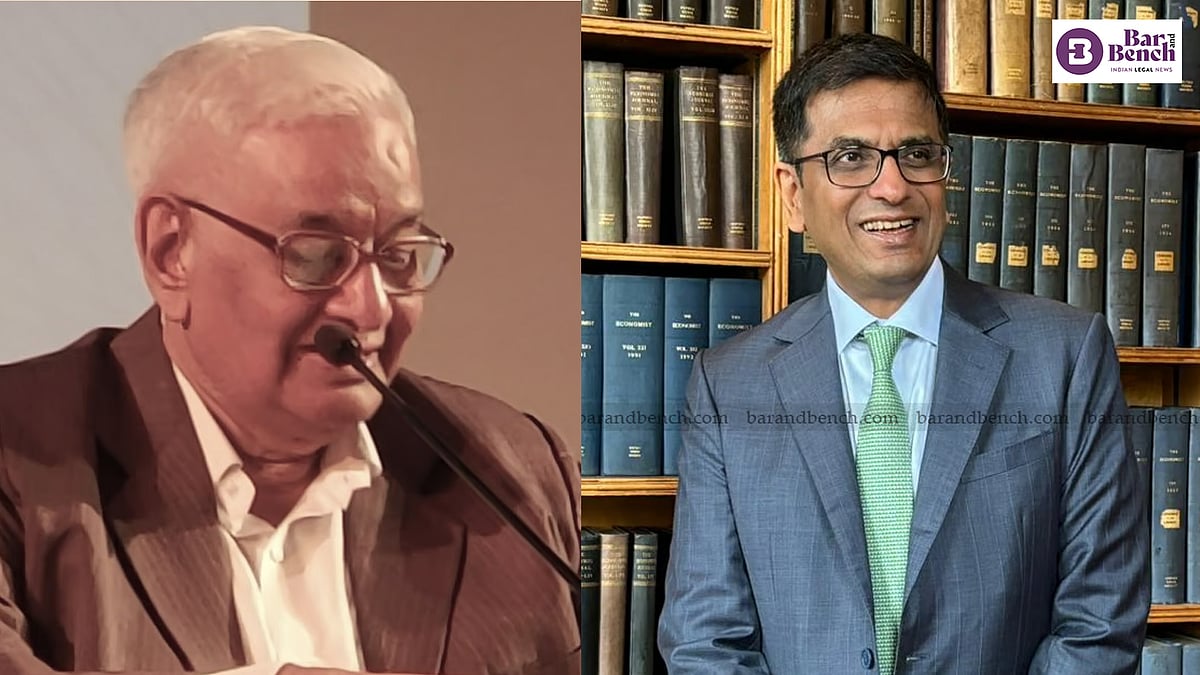Headline: Justice Chavan Reflects on Chandrachud’s Tenure: Cautious Yet Impactful
Justice Chandrachud’s journey from the Bombay High Court to the Chief Justice of India (CJI) has drawn varied perspectives on his approach and legacy. Recently, Justice Chavan offered an insightful evaluation of Chandrachud’s judicial demeanor, highlighting his cautiousness, inspiration to colleagues, and the challenges he faced while addressing contentious legal issues. This discussion is particularly relevant in an era marked by rapid technological advancements and evolving societal norms.
Chandrachud’s Judicious Approach
Justice D.Y. Chandrachud was viewed as a potential CJI even before his elevation, earning respect for his thoughtful approach during his tenure at the Bombay High Court bench. Justice Chavan remarked on Chandrachud’s careful navigation through sensitive issues such as homosexuality and privacy. “He had a lot of pressure," said Chavan, emphasizing how Chandrachud inspired judges without engaging in unnecessary controversy.
Chandrachud’s strategy focused on not introducing potentially divisive ideas directly into his judgments. Instead, he chose to articulate his thoughts within appropriate contexts, holding back until he was in a position to effect substantial legal change. “He did not sow these ideas in his Bombay High Court judgments so as to not stir the pot,” Chavan noted, indicating a prudent restraint that would later position Chandrachud favorably to address broader issues once he took on the role of CJI.
Navigating Pressures of Leadership
Justice Chavan’s assessment implies that Chandrachud was a model of prudence amid the pressures of judicial leadership. He reflected on the complexities faced by judges in high-profile positions, particularly when navigating the evolving landscape of societal values influenced by technological innovation.
With the rise of social media and enhanced public discourse around sensitive topics, the judiciary’s role has become even more significant. Justice Chavan acknowledged the difficulties in balancing personal convictions with the expectations and established norms of legal narratives. “He was conservative, conformist, and cautious to a fault there,” Chavan added, giving insight into the intricacies of appellate decision-making.
The Cricket Match Analogy
Chavan drew a colorful analogy to cricket, likening the final years of Chandrachud’s tenure to a batter facing the last overs of a match, attempting to score big but ultimately facing challenges that hinder progress. “The batter perhaps got battered,” he quipped, noting that while Chandrachud took bold administrative initiatives, time constraints prevented him from enacting all his envisioned reforms.
Justice Chavan articulated a concern that, while there is an urgency for judicial improvements in an age where technology and legal frameworks intersect, endeavors may become rushed, potentially compromising effectiveness. Techniques ranging from streamlining judicial processes to improving access to justice via digital platforms are vital but require careful implementation.
Future Implications on Technology and Society
The evaluation of Justice Chandrachud’s approach has implications that extend beyond the legal sphere, particularly as technology reshapes societal interactions and norms. As legal precedents involving digital rights, privacy, and freedom of expression evolve, the judiciary must remain attuned to these developments.
Given the profound impact of tech-infused connectivity on contemporary socio-legal considerations, Justice Chandrachud’s cautious yet thoughtful methodology may provide a framework for navigating future challenges. His legacy could inspire forthcoming leaders within the judiciary to balance innovation with tradition, adapting to societal needs without losing sight of foundational legal principles.
Engaging with the Future
As the discussion surrounding Justice Chandrachud’s tenure continues, readers are encouraged to consider the lasting effects of his leadership on the Indian legal system. With digital advancements poised to further challenge legal boundaries, the judiciary’s journey into this evolving landscape will be critical.
What is your take on Justice Chandrachud’s caution during his time at the Bombay High Court? Do you believe maintaining a conservative approach hinders progress in judicial reforms? We invite you to share your thoughts below and engage with your fellow readers on these pressing issues.
For more insights on technology’s impact on law, explore our other articles on Shorty-News, or refer to authoritative sources such as TechCrunch, The Verge, or Wired to stay informed on the intersection of law and technology.
Note: This article is crafted for clarity, accuracy, and engagement, designed to stimulate thoughtful discussion on the evolving role of the judiciary in an increasingly digital world.

